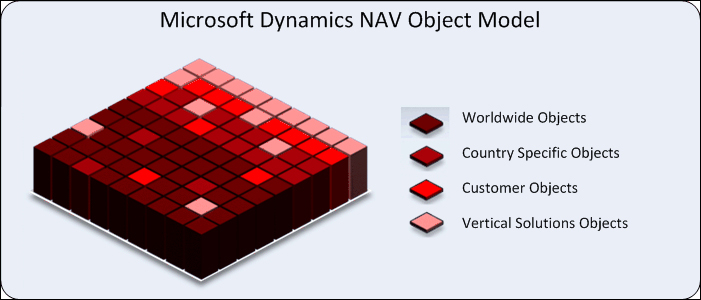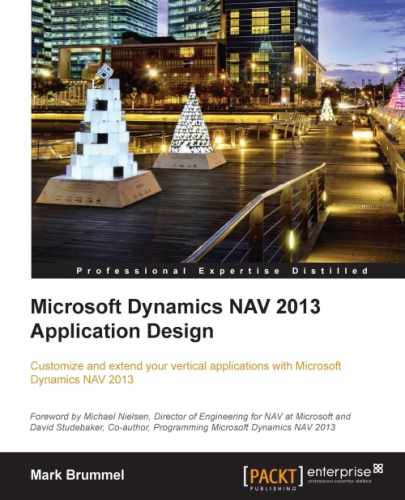Implementing an ERP product like Microsoft Dynamics NAV is not just installing a software package and starting to use it. Each part of your company will have to make decisions how to integrate their work with the software. This very often leads to an interesting new look with respect to your company's way of work.
There are several ways of implementing Dynamics NAV. It is highly important to make a decision what kind of implementation you want and adjust the implementation accordingly.

Compared to when it was introduced in 1995, Microsoft Dynamics NAV 2013 is a mature ERP package with all the built-in functionalities we discussed in this book. On top of this standard product, resellers have built horizontal and vertical solutions called add-on products. These two combined offer powerful solutions for companies that cannot work with the standard product but are flexible enough to use a vertical solution.
Vertical solutions have started years ago as a customized solution for a company who decided to implement Microsoft Dynamics NAV. Together with the implementation partner, these companies have customized the product to meet their requirements.
Many of these add-on products are now grown up software solutions that fit a vertical industry.
When buying an add-on solution, it is good to ask the reseller some questions:
- What is the release procedure? A solid add-on solution has a release procedure. Most resellers have periodical release every half year or maybe sooner. If a bug is found in the software, there should be a hot fix. Most resellers have releases they support. Make sure to know what versions are still supported.
- How do I upgrade to a new version of the vertical solution? If a new version of the vertical solutions is released, there should be an upgrade procedure. This should be clearly documented and tested by the reseller.
- Am I allowed to make changes to the software? Most add-on resellers do not recommend their customers to change the software. The reason for this is the increased complexity of bug fixing and upgrading.
- What if I do change the software? If an add-on solution is customized anyway, it is basically downgraded from being a supported add-on solution to a customized database. For most resellers, it is difficult to support these customized solutions.
Although customizing an add-on solution is not always recommended, customizing Microsoft Dynamics NAV should not be considered a bad practice.
The impact of customization in Microsoft Dynamics NAV can make a difference that can be compared to a suit that is confection or tailored to fit. The benefits of having an ERP package that exactly fits the organization can be more important than the increased cost of ownership of the solution.
The total cost of ownership of Microsoft Dynamics NAV depends highly on the level of customizations. A non-customized implementation with one or two good add-on products done by experienced consultants will have a low impact on your company and will be easy to maintain and support.
The higher the level of customizations, the more it will cost to keep the application running. This is not a bad thing per se. If your company has a unique way of doing business, it might need an ERP package that supports this uniqueness.
Designing a solid application in Microsoft Dynamics NAV starts with a thorough knowledge of the standard application functionality and its design philosophy.
Secondly, we need to carefully analyze the business process we want to support and implement new functionality step by step to ensure good quality, as the solution grows bigger and mature.
Use data and posting models that are similar to Microsoft Dynamics NAV and try to maintain a similar user interface. This will make it easier for end users to adopt your solution and more likely for the software to be easy to maintain and support.
Last but not least, carry out good housekeeping in your database. Compress and clean up data periodically to guarantee a stable performance of the system now and in the future.
